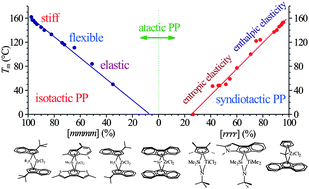Single site metallorganic polymerization catalysis as a method to probe the properties of polyolefins
Abstract
Single-site metallorganic

* Corresponding authors
a
Dipartimento di Chimica “Paolo Corradini, Università di Napoli “Federico II”, Complesso Monte S.Angelo, Via Cintia, Napoli, Italy
E-mail:
claudio.derosa@unina.it, auriemma@unina.it
Fax: +39 081 674090
Tel: +39 081 674341
Single-site metallorganic

 Please wait while we load your content...
Something went wrong. Try again?
Please wait while we load your content...
Something went wrong. Try again?
C. De Rosa and F. Auriemma, Polym. Chem., 2011, 2, 2155 DOI: 10.1039/C1PY00129A
To request permission to reproduce material from this article, please go to the Copyright Clearance Center request page.
If you are an author contributing to an RSC publication, you do not need to request permission provided correct acknowledgement is given.
If you are the author of this article, you do not need to request permission to reproduce figures and diagrams provided correct acknowledgement is given. If you want to reproduce the whole article in a third-party publication (excluding your thesis/dissertation for which permission is not required) please go to the Copyright Clearance Center request page.
Read more about how to correctly acknowledge RSC content.
 Fetching data from CrossRef.
Fetching data from CrossRef.
This may take some time to load.
Loading related content
